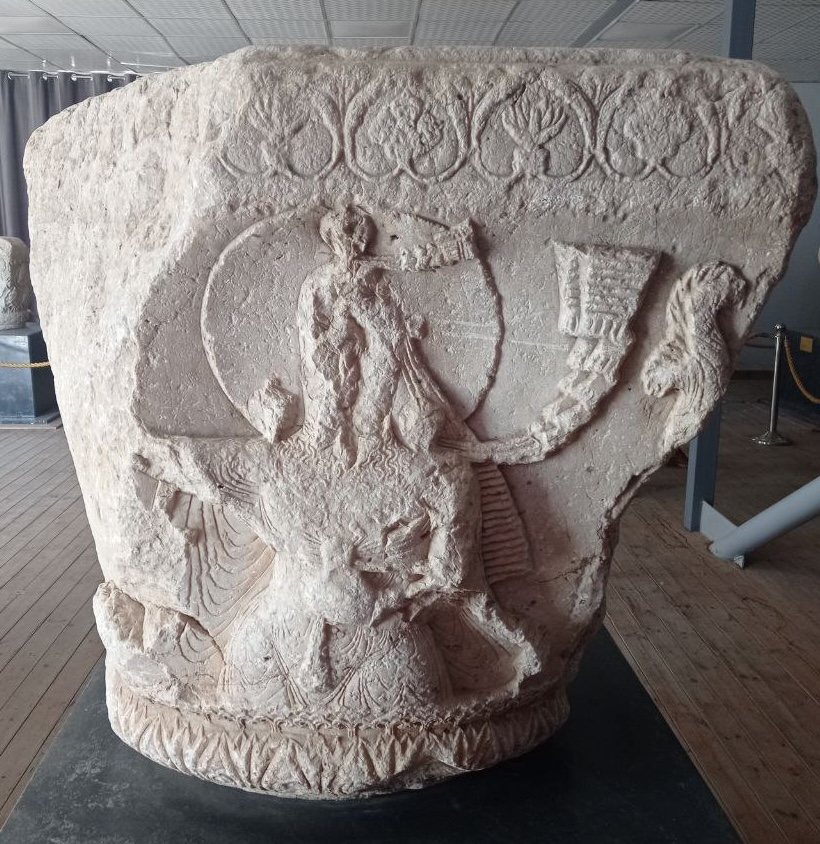Thread: The late 3rd millennium BC, was a time of huge upheaval in Iberia. The existing social structures collapsed...When the dust settled, around 2200BC, a new civilisation, known as El Argar culture, emerged in this area... 

People of this culture built amazing hillforts, like the La Almoloya citadel...Which were at the time also built in Eastern Mediterranean (including Greece)...And nowhere in between... 

They were metalworkers and warriors...Who were buried in single graves...Located under the floors of houses...Again feature of the cultures in Eastern Mediterranean (including Greece)...And nowhere in between, and nowhere else in Iberia... 

Eventually they started burying their dead in pithoi (large grain jars)...Again feature of the cultures in Eastern Mediterranean (Greece)...And nowhere in between, and nowhere else in Iberia... 

This is only possible if there was a direct maritime link between somehow culturally related groups of people in Greece and Southern Spain...We know that these kind of maritime links existed since Neolithic, so no surprises there...oldeuropeanculture.blogspot.com/2020/07/neolit…
These warriors used deadly halberds as their titular weapons...Warrior grave with halberd... onlinelibrary.wiley.com/doi/abs/10.111…
ceur-ws.org/Vol-2024/IberC…
ceur-ws.org/Vol-2024/IberC…

Halberds, the scull slicers I talked about in this thread, which seem to have been propagated through a maritime trade links going along Atlantic and North Mediterranean coast.



https://twitter.com/serbiaireland/status/1462482741388263434



Interestingly, El Argar warriors (apparently) could have been either ruled by women, or there was a group of elite women who could have played some significant role in the society (priestesses)...
Archaeologists came to this conclusion based on the same type of diadems found on the heads of women buried in the El Algar culture graves with extremely rich burial offerings... 

phys.org/news/2021-03-e…
For instance, burial from La Almoloya, with remains of a man aged 35-40, and a woman aged 25-30, buried with over 30 prestigious objects, many of which were made or embellished with silver and almost all belonging to the female. Including the diadem...
For instance, burial from La Almoloya, with remains of a man aged 35-40, and a woman aged 25-30, buried with over 30 prestigious objects, many of which were made or embellished with silver and almost all belonging to the female. Including the diadem...
Hmmm...Bronze Age warrior society with high status women...This sounds so Old Europe...
My favourite bit: El Algar culture marks the beginning of complete male genes replacement in Iberia. All males found in El Algar burials are R1b, Yamna related... science.org/doi/10.1126/sc…
My favourite bit: El Algar culture marks the beginning of complete male genes replacement in Iberia. All males found in El Algar burials are R1b, Yamna related... science.org/doi/10.1126/sc…
Sooo...You know the story about bad macho warrior Indo-Europeans who killed all the peaceful farmer Old-European, and replaced Neolithic matriarchate with Bronze Age patriarchate and ruined everything...Things were a bit more complicated than that, it seems...
But we already saw that Indo-European vs Old-European thing is pretty much dead and buried by genetic data...I talked about this here in my post about Lengyel vs Baden culture... oldeuropeanculture.blogspot.com/2021/10/so-ind…
So more reason to laugh at the whole Indo-European vs Old-European thingy. BTW, I started laughing here, in my post about Vinča warriors (Army figurine group from Stubline) oldeuropeanculture.blogspot.com/2016/07/vinca-… 

But the important thing for me, is that here again we have proof of long distance maritime links in Bronze Age, this time between Eastern Mediterranean and South Iberia...
Which is important when we know about Irish legends talking about Bronze age immigrants (the guys who brought R1b genes, metalwork, single cyst burials, bling...) arriving to Ireland using this maritime route... 

I talked about the Irish oral histories and archaeology which seems to support them in oldeuropeanculture.blogspot.com/p/montenegrian…
See these gold discs with crosses? These ones are from the Balkans, dated first half of the 3rd mill. BC. They appear in Ireland in the second half of the 3rd mill. BC.

See these gold discs with crosses? These ones are from the Balkans, dated first half of the 3rd mill. BC. They appear in Ireland in the second half of the 3rd mill. BC.


I have to apologise to everyone waiting for the continuation of my thread series about Apollo, Hermes and snakes, but I got distracted...🙂 Story of my life...
• • •
Missing some Tweet in this thread? You can try to
force a refresh























